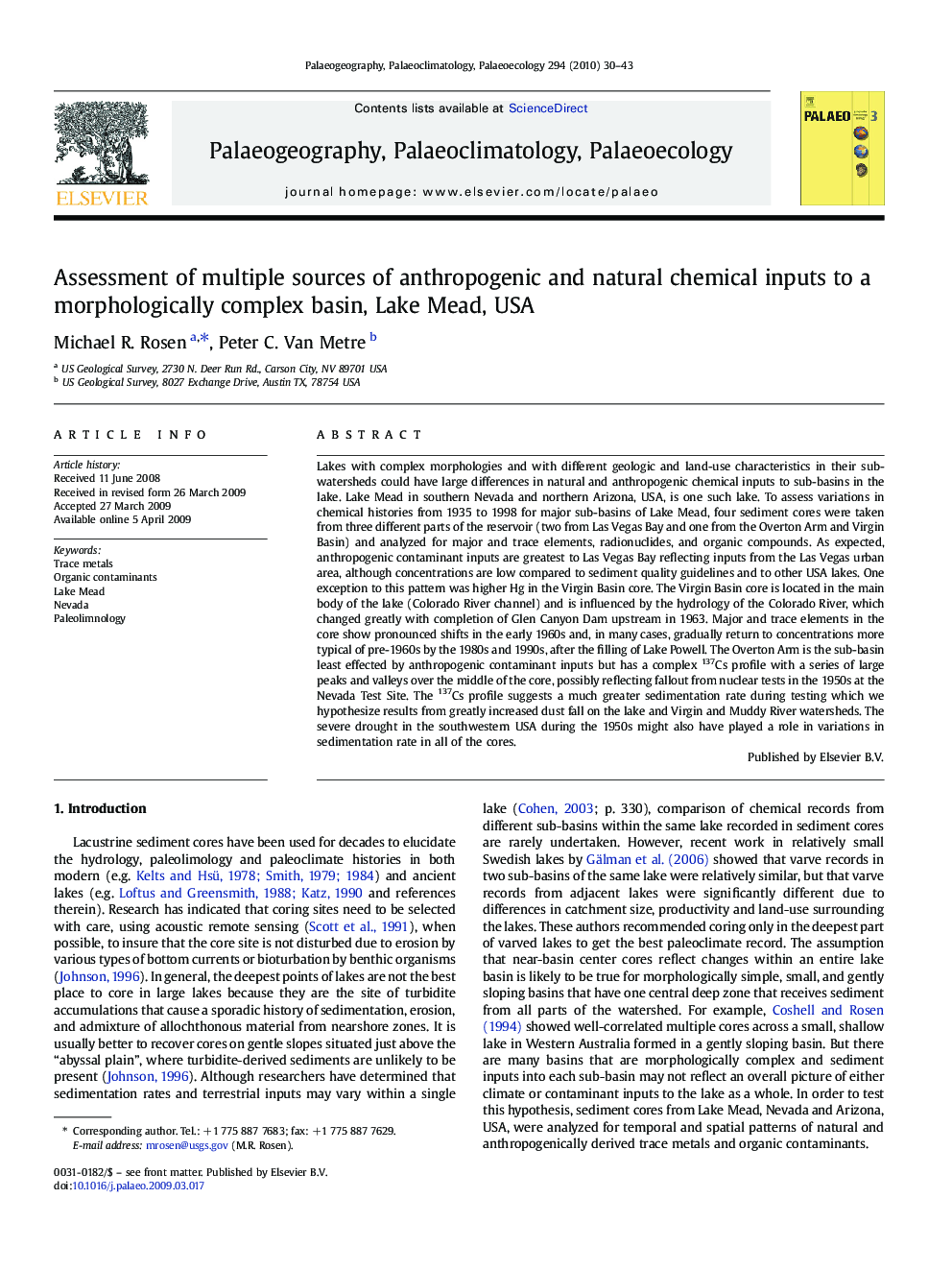| کد مقاله | کد نشریه | سال انتشار | مقاله انگلیسی | نسخه تمام متن |
|---|---|---|---|---|
| 4467693 | 1622274 | 2010 | 14 صفحه PDF | دانلود رایگان |

Lakes with complex morphologies and with different geologic and land-use characteristics in their sub-watersheds could have large differences in natural and anthropogenic chemical inputs to sub-basins in the lake. Lake Mead in southern Nevada and northern Arizona, USA, is one such lake. To assess variations in chemical histories from 1935 to 1998 for major sub-basins of Lake Mead, four sediment cores were taken from three different parts of the reservoir (two from Las Vegas Bay and one from the Overton Arm and Virgin Basin) and analyzed for major and trace elements, radionuclides, and organic compounds. As expected, anthropogenic contaminant inputs are greatest to Las Vegas Bay reflecting inputs from the Las Vegas urban area, although concentrations are low compared to sediment quality guidelines and to other USA lakes. One exception to this pattern was higher Hg in the Virgin Basin core. The Virgin Basin core is located in the main body of the lake (Colorado River channel) and is influenced by the hydrology of the Colorado River, which changed greatly with completion of Glen Canyon Dam upstream in 1963. Major and trace elements in the core show pronounced shifts in the early 1960s and, in many cases, gradually return to concentrations more typical of pre-1960s by the 1980s and 1990s, after the filling of Lake Powell. The Overton Arm is the sub-basin least effected by anthropogenic contaminant inputs but has a complex 137Cs profile with a series of large peaks and valleys over the middle of the core, possibly reflecting fallout from nuclear tests in the 1950s at the Nevada Test Site. The 137Cs profile suggests a much greater sedimentation rate during testing which we hypothesize results from greatly increased dust fall on the lake and Virgin and Muddy River watersheds. The severe drought in the southwestern USA during the 1950s might also have played a role in variations in sedimentation rate in all of the cores.
Journal: Palaeogeography, Palaeoclimatology, Palaeoecology - Volume 294, Issues 1–2, 1 August 2010, Pages 30–43